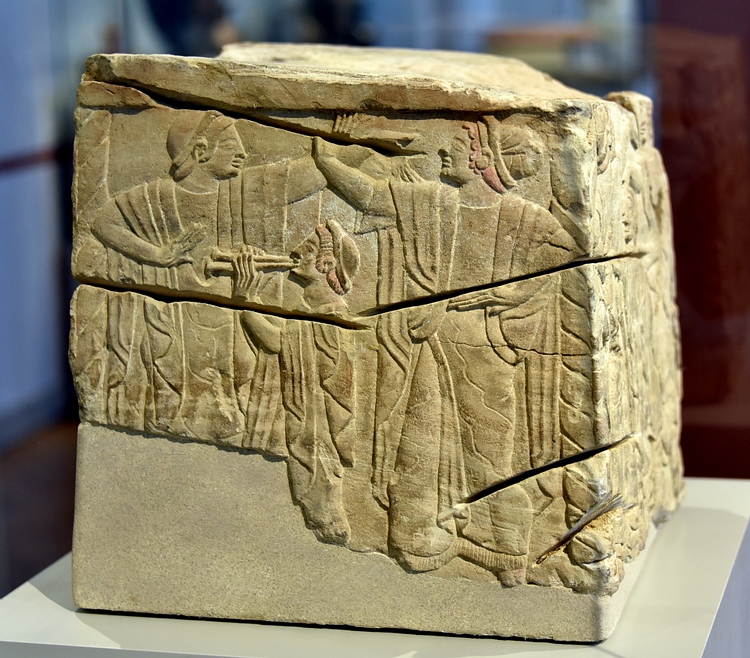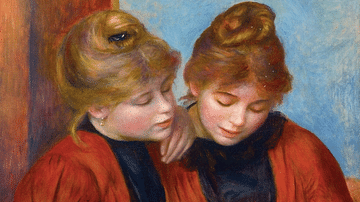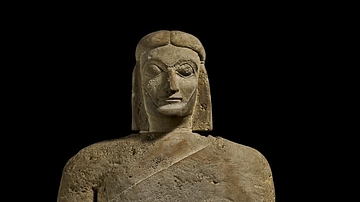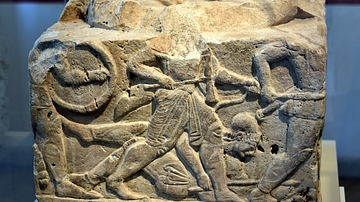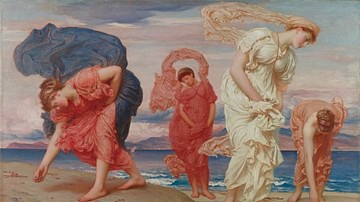Illustration
Square-shaped cippi were found inside burial chambers and carried an egg-shaped top, possibly as a symbol of life and fertility. The scenes depicted in bas-reliefs are connected with cult of the dead and burial, as are here the dances are in honor of the deceased. Limestone (pietra fetida). From Chiusi, Italy. Circa 500 BCE. Acquired from Collection Mazzetti (19th century). It is on display at the Altes Museum in Berlin, Germany.
About the Author
Cite This Work
APA Style
Amin, O. S. M. (2019, October 29). Dancing Girls & Young Men on Cippus. World History Encyclopedia. Retrieved from https://www.worldhistory.org/image/11389/dancing-girls--young-men-on-cippus/
Chicago Style
Amin, Osama Shukir Muhammed. "Dancing Girls & Young Men on Cippus." World History Encyclopedia. Last modified October 29, 2019. https://www.worldhistory.org/image/11389/dancing-girls--young-men-on-cippus/.
MLA Style
Amin, Osama Shukir Muhammed. "Dancing Girls & Young Men on Cippus." World History Encyclopedia. World History Encyclopedia, 29 Oct 2019, https://www.worldhistory.org/image/11389/dancing-girls--young-men-on-cippus/. Web. 04 Jul 2025.

